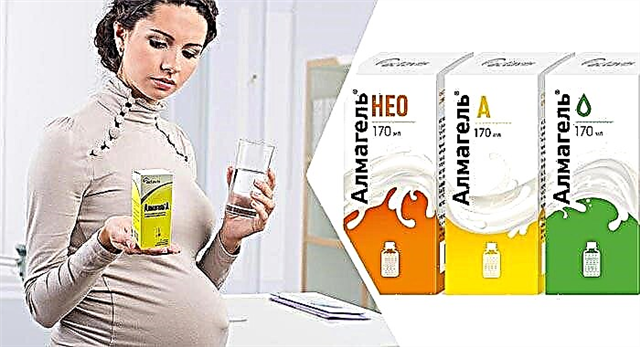Neuro-arthritic diathesis is a serious illness. Many parents are looking for information about this disease, and what abnormalities in the functioning of the body are associated with it. What signs should you not overlook? Are there any medications to get rid of the disease forever?
Neuroarthritic diathesis in children (NAD) is a dangerous disorder characterized by a rather serious course and adverse consequences. Fortunately, the disease is not common; it is diagnosed by about 2 - 5% of children. But many experts say the incidence is increasing every year. Therefore, parents should closely monitor the condition and development of the child.
Diathesis is a constitutional predisposition or tendency to a certain disease or other abnormal state of the body or mind.
More than 17 types of diathesis are described in the scientific literature, the most studied of which are essudative-catarrhal, lymphatic-hypopaltic, neuro-arthritic, allergic, hemorrhagic diathesis.
Neuro-arthritic diathesis is a diathesis characterized by a tendency to obesity, hypertension, diabetes mellitus, atherosclerosis, gout, which is caused by disorders of carbohydrate, lipid and purine metabolism. NAD is characterized by high mental excitability, eating and digestive disorders.
Causes
In the etiology of NAD, both hereditary factors and environmental conditions are of great importance. As a rule, the relatives of the child are diagnosed with gout, urolithiasis and cholelithiasis, coronary heart disease, arterial hypertension, atherosclerosis, diabetes mellitus, joint diseases, neuralgia, migraine.
External factors for the onset of the disease include:
- violation of the mother's diet during pregnancy (protein diet);
- improper diet of the child (excessive consumption of animal protein);
- poor environmental situation in the place of residence.
In the mechanism of development of NAD and some of its manifestations, the leading role belongs to disorders of the metabolism of purines (chemical compounds that are naturally produced in the body and also found in certain foods), in particular, excess uric acid in the blood (hyperuricemia). Hyperuricemia can occur primarily due to changes in genes encoding metabolic enzymes, or develop secondarily with increased cleavage of purines due to hemolytic diseases (blood disease that occurs when the blood types of the mother and the child are incompatible), dietary changes, and physical overload. A high level of uric acid and its salts, as well as the accompanying acidosis (violation of the acid-base balance of the body) cause digestive disorders in the child, excessive excitability and other neurological disorders, and also contribute to the development of urolithiasis and cholelithiasis.
Symptoms
The clinical picture combines four syndromes: metabolic, neurasthenic, cutaneous, spastic.
| Syndrome name | Typical manifestations. |
| Exchange | Transient, often nocturnal joint pain, dysuric disorders. |
| Neurasthenic | Excitement, moodiness, tearfulness, rapid development of speech and the formation of reflexes, poor sleep, night fears, muscle twitching, tics, persistent anorexia, aerophagia (swallowing air and belching), emotional lability, logoneurosis (stuttering), enuresis. |
| Cutaneous | Neurodermatitis, urticaria, seborrhea, dry eczema, prurigo (prurigo). |
| Spastic | Abdominal pain, neuralgia, myalgia, migraines, bronchospasm, renal, hepatic and intestinal colic, spastic colitis, constipation. |
Children with NAD are characterized by a special state of the nervous system and mental sphere, a tendency to digestive disorders and joint damage. The periods of exacerbations of NAD are characterized by attacks of acetonemic vomiting, which begins suddenly, without precursors, as a rule, after disturbances in the diet or psychoemotional stress. There is repeated indomitable vomiting (up to 20 - 30 times a day) first eaten food, and the vomit has the smell of acetone.
This smell is also clearly detected when the patient breathes. Dehydration often occurs, requiring intensive care.

Acetonemic vomiting with NAD should be differentiated from other diseases that are also manifested by indomitable vomiting and require other therapeutic measures.
Differential diagnosis of vomiting of various origins
| Sign | OVER | Type 1 diabetes mellitus | Functional impairment of the biliary tract | Food intoxication |
| The beginning of the attack | Sudden | There are antecedents - nausea, intense thirst | After food errors | After food errors |
| Duration of an attack | Persistent, prolonged vomiting | Usually short-term with the subsequent development of typical symptoms of diabetes mellitus | For a short time | Persistent prolonged vomiting |
| Type of vomit and impurities | First eaten food, then mucous vomiting | Eaten food | Eaten food with an admixture of bile | Eaten food, then mucous vomiting |
| Smell of vomit | The smell of acetone appears at the peak of the attack | Usual | Smell of bile | Unpleasant and even fetid |
Diagnostics
The disease is diagnosed based on the compliance with a number of signs, according to the following criteria.
- Appearance. Two body types are possible. Some children are too thin and gain weight slowly, while other children may be overweight and obese.
- Leather. Children with NAD are prone to allergic reactions.
- The lymphatic system. With NAD, the patient's lymph nodes are small, dense, and painless.
- Central nervous system and mental sphere. The products of purine metabolism have a stimulating effect on the central nervous system. This contributes to earlier mental and emotional development. Children are active, mobile (choleric), they quickly begin to speak, demonstrate curiosity, interest in their surroundings, remember well what they have said or read, and start reading early. At the same time, easily excitable, capricious and suspicious, hysterical reactions are not uncommon. Also, sleep disturbance, unmotivated persistent low-grade fever, hypersensitivity to odors, neuralgia (pain in the nerve region), migraine, and obsessive movement syndrome are characteristic.

- The cardiovascular system. There are pains in the left side of the chest, but there are no functional and morphological changes in the heart and blood vessels.
- The genitourinary system. NAD is characterized by dysuric disorders (cramps and pain during urination, the frequency of emptying the bladder decreases or increases, urinary incontinence, enuresis). In urine tests, high levels of leukocytes (leukocyturia), cylinders (cylindruria) and salts (saluria) are found. Possible proteinuria (protein in the urine), microhematuria (erythrocytes in the urine).
- Gastrointestinal tract. On the part of the digestive tract with NAD, there is a decrease in appetite (up to anorexia), its selectivity, abdominal pain, frequent regurgitation, vomiting, violation of the act of defecation.
- Laboratory data. According to the results of laboratory blood tests in patients with NAD, the following abnormalities will be revealed: lymphocytosis (an increase in lymphocytes), neutropenia (a decrease in neutrophils), an increase in uric acid content, hyperlipidimia (an increase in lipids), hypercholesterolemia (high cholesterol), acidosis, ketonemia (content in blood of ketone bodies).
- Ultrasound results. Hepatomegaly (enlarged liver) often occurs, rarely splenomegaly (enlarged spleen)
Treatment
Treatment includes rational nutrition, adherence to a therapeutic and protective regime - good sleep, alternation and combination of rest and physical activity, limiting stress and psycho-emotional overload, prohibition of force-feeding, diet therapy.
With high nervous excitability, herbal sedatives, glycine are prescribed. With saluria (salt in urine) - herbal medicine, membrane stabilizing drugs and antioxidants.
 In an acetone crisis, therapy should be aimed at eliminating dehydration. Shows a slow introduction through the mouth in small portions of alkaline non-carbonated mineral waters ("Borjomi") or 2 - 5% sodium hydrogen carbonate solution.
In an acetone crisis, therapy should be aimed at eliminating dehydration. Shows a slow introduction through the mouth in small portions of alkaline non-carbonated mineral waters ("Borjomi") or 2 - 5% sodium hydrogen carbonate solution.
If oral rehydration is impossible, in a hospital setting, parenteral rehydration is carried out - intravenously drip 5-10% glucose solution, complex solution of sodium chloride (Ringer's solution), polymerized starch, sodium bicarbonate. Shown in a short course (no more than 3 - 5 days) enterosorbents - dioctahedral smectite (Smecta), polymethylsiloxane polyhydrate (Enterosgel), etc.
Surgical intervention is carried out with the development of urolithiasis against the background of NAD to remove large stones. Small formations are cleaved by electromagnetic waves (extracorporeal lithotripsy).
Surgical operation does not guarantee complete healing, as stones will form again later.
Diet recommendations
| Recommended | Limited | Ruled out |
| Natural feeding is as long as possible, and with artificial feeding - adapted fresh and fermented milk mixtures. The first complementary food is cereal (porridge). Products with an antiketogenic effect: fruits, vegetables, boiled or steamed beef, dairy products. | Animal fats. Meat, poultry, fish, broths, confectionery products, digestible carbohydrates, smoked and fried foods. | Foods enriched with caffeine and purine bases: kidneys, liver, pate, brains, spinach, cauliflower, sorrel, parsley, legumes, green peas, sardines, herring, coffee, chocolate, strong tea, cocoa. |
Traditional methods
In the treatment of folk remedies for NAD, diuretic herbs are used, which can destroy uric acid salts. These products include birch leaves and birch sap; parsley roots, celery, corn thread, asparagus, etc. When a chronic infection in the urinary tract is detected, he resorts to herbal remedies with antispasmodic, anti-inflammatory, antimicrobial effects. The duration of therapy with alternative methods is approximately 2 months.
Recipes
- Take 5 - 6 grape leaves, thoroughly washed and peeled. Put them on the bottom of a glass jar, pour 175 ml of boiled water. Keep in a water bath for 5 to 7 minutes. After cooling, strain the infusion. Drink half a cup after meals three times a day.
- Pour a tablespoon of dried black currant into a thermos, pour 200 ml of boiling water, leave for 2 hours. Strain the liquid. Drink regardless of food 2 - 3 times a day.
Homeopathic treatment
Proponents of homeopathy are convinced that with an integrated approach, you can get rid of the disease. For the correct choice of funds, you need to consult a specialist in this area.
- Bryony alba is a remedy used for joint inflammation with limited range of motion.
- Colchicum-dispersant is a drug that restores appetite, relieves swelling of joints, relieves flatulence, stabilizes the composition of urine, soothes and eliminates irritation.
- Formic acid is a remedy used for arthralgia caused by protein and urate in the urine. Relieves pain, normalizes blood pressure.
- Celandine - added to water when bathing, relieves arthralgia.
- Potassium carbonate - the remedy helps to eliminate the negative effects of the patient's dietary disturbances.
Homeopaths are confident that a favorable outcome depends on the timeliness of treatment.
Prevention
Prevention implies compliance with regimen measures, prevention of emotional overload, limiting the intake of foods rich in purines into the body. Dispensary observation of children with NAD is carried out by a local pediatrician during an early age. In subsequent years, the doctor must carefully monitor the development of the child - these children are threatened with the appearance of metabolic diseases.
Conclusion
NAD should be considered not as a disease, but as a predisposition to it, associated with genetically determined factors, adverse effects of the external environment. Children need the correct organization of the daily routine, care and nutrition to prevent the development of diseases. The doctor's task is to identify the symptoms of diathesis in a timely manner and start preventive measures as early as possible.




